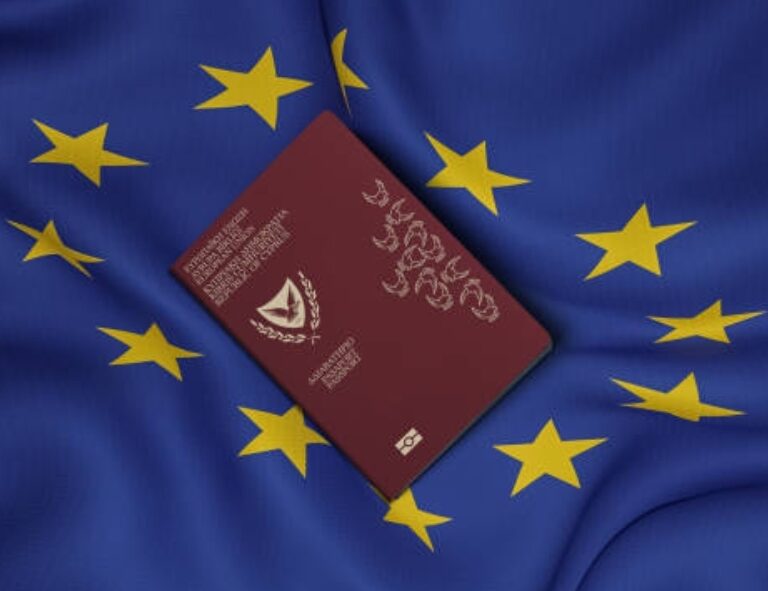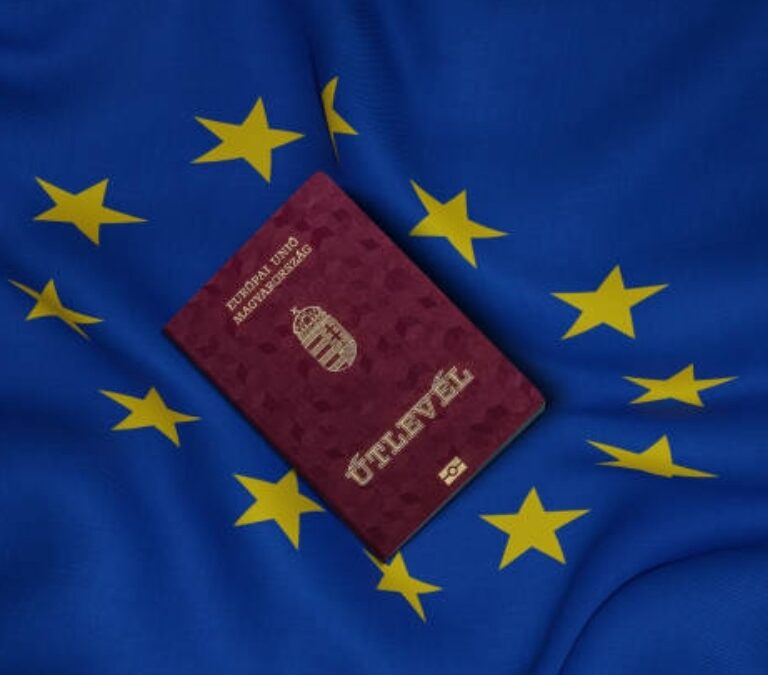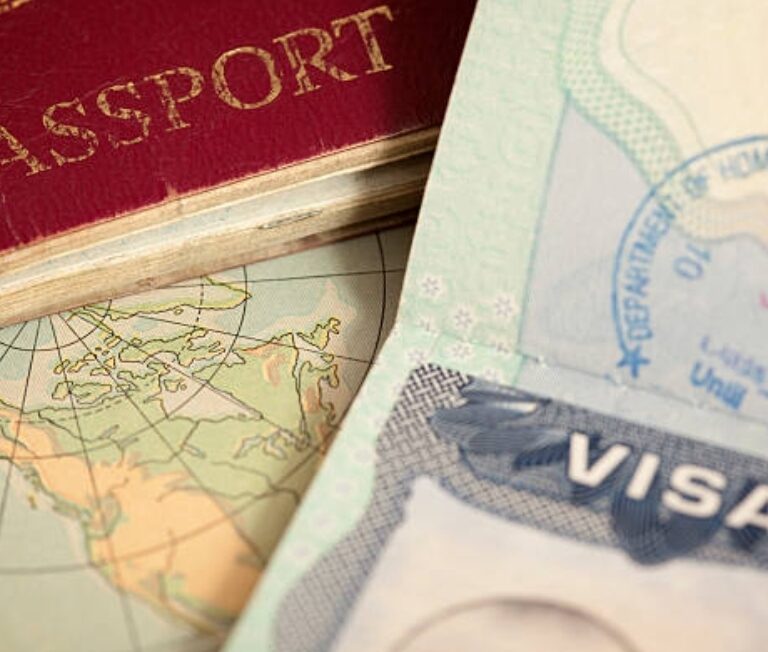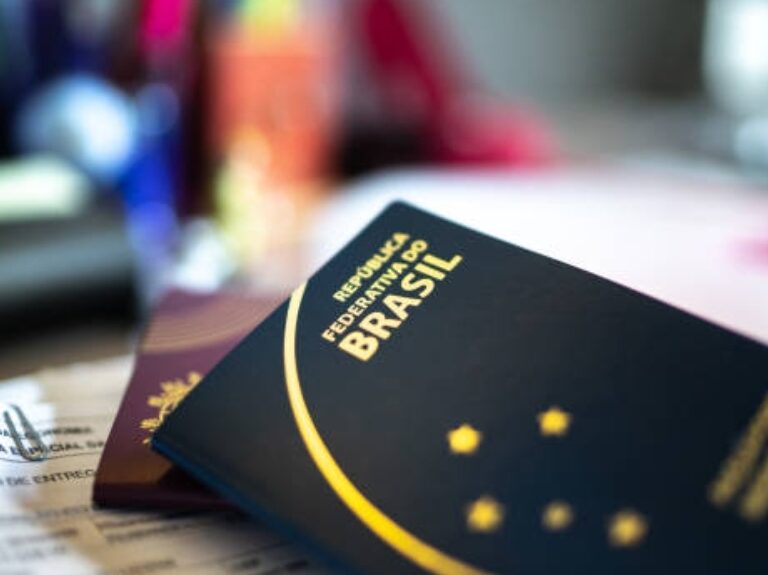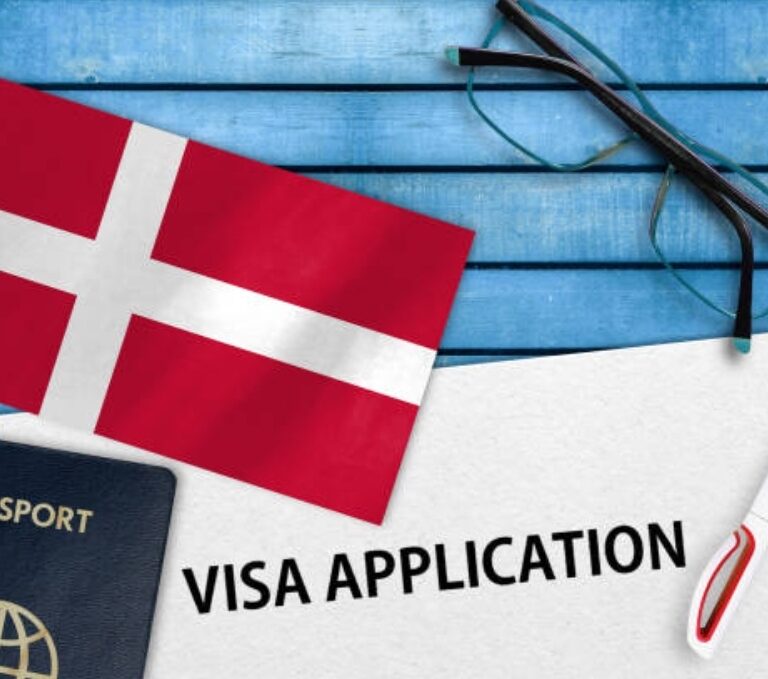US CR1/IR1 Spouse Visa Guide: Bringing Your Husband or Wife to America
Navigating the U.S. immigration system can feel daunting, especially when your goal is to reunite with your spouse. If you are a U.S. citizen or a Lawful Permanent Resident (LPR) married to a foreign national living abroad, the CR1 (Conditional Resident) and IR1 (Immediate Relative) visas are the primary pathways to bring your husband or wife to live permanently in the United States. This comprehensive guide will walk you through the process, eligibility requirements, timelines, and crucial steps involved in securing a USA Marriage Visa to get Permanent Residency. Understanding this process is the first step towards building your life together in America.
Understanding the Difference: CR1 vs. IR1 Visa
While both the CR1 and IR1 visas allow a foreign spouse to immigrate to the U.S. as a permanent resident (Green Card holder), the key difference lies in the duration of your marriage at the time the visa is approved or when the spouse enters the U.S. on the immigrant visa.
The CR1 Visa (Conditional Resident)
If you and your spouse have been married for less than two years when their Green Card is approved or they enter the U.S., they will likely receive a CR1 visa. This visa grants conditional permanent resident status.
- Condition: The “conditional” status is designed to deter marriage fraud. It means the Green Card is only valid for two years.
- Removing Conditions: To obtain a standard 10-year Green Card, the couple must jointly file Form I-751, Petition to Remove Conditions on Residence, within the 90-day window before1 the two-year conditional Green Card expires. Failure to do so can result in the termination of resident status.
The IR1 Visa (Immediate Relative)
If you and your spouse have been married for two years or more when their Green Card is approved or they enter the U.S., they will likely receive an IR1 visa.
- No Conditions: This visa grants immediate permanent resident status without conditions.
- Green Card Validity: The initial Green Card received is valid for 10 years and can be renewed. There is no need to file Form I-751 to remove conditions.
Key Distinction: Length of Marriage is Crucial
The U.S. Citizenship and Immigration Services (USCIS) and the Department of State (DOS) determine which visa (CR1 or IR1) is appropriate based on the marriage duration at the time of visa approval or admission to the U.S. The application process itself is largely identical for both; the classification simply changes based on how long you’ve been married when the final step occurs. Processing times can sometimes be lengthy, so a couple applying shortly after marriage might find their case takes long enough that they qualify for the IR1 by the time of approval.
Eligibility Requirements for the US Sponsor (Petitioner)
To petition for your foreign spouse, you (the U.S. sponsor) must meet several key requirements:
US Citizenship or Lawful Permanent Resident Status
- You must be either a U.S. Citizen or a Lawful Permanent Resident (Green Card holder).
- U.S. Citizens can petition for their spouse regardless of where the citizen resides, although they must intend to establish domicile in the U.S.
- Lawful Permanent Residents must maintain their LPR status throughout the process. Note that the process for spouses of LPRs falls under a preference category (F2A), which often involves longer waiting times due to annual visa limits compared to spouses of U.S. citizens (who are considered Immediate Relatives with unlimited visas).
Intent to Establish Domicile in the US
You must live in the U.S. or prove your intent to establish domicile (residence) in the United States alongside your immigrating spouse. If you are living abroad temporarily, you’ll need to provide evidence that you plan to return to the U.S. to live. This might include securing accommodation, opening U.S. bank accounts, registering children in U.S. schools, or obtaining U.S. employment.
Meeting the Income Requirements (Affidavit of Support)
Perhaps one of the most critical requirements is proving you can financially support your spouse. This is done through the Affidavit of Support (Form I-864). You must demonstrate an income level at or above 125% of the federal poverty guidelines for your household size (including yourself, your spouse, any dependents, and potentially others). Active-duty military members sponsoring a spouse or child only need to meet 100% of the poverty guidelines. We will delve deeper into the Affidavit of Support later in this guide. Understanding financial responsibilities is key, much like exploring Accountant Jobs with Visa Sponsorship for Foreigners requires understanding fiscal roles and requirements, though the linked opportunities are based in Canada.
Eligibility Requirements for the Foreign Spouse (Beneficiary)
The foreign spouse (the beneficiary) must also meet specific criteria:
Legal Marriage to the US Sponsor
- You must be legally married. The marriage must be valid in the country where it took place and recognized by U.S. law. Common-law marriages may qualify under specific circumstances depending on the laws of the jurisdiction where the relationship was established.
- Both spouses must have been free to marry (any previous marriages must have been legally terminated through divorce, annulment, or death).
- Crucially, the marriage must be bona fide – meaning it was entered into genuinely for love and companionship, not solely for immigration benefits. You will need to provide evidence of your legitimate relationship.
Admissibility to the United States
The foreign spouse must be “admissible” to the U.S. This means they cannot fall under any grounds of inadmissibility outlined in the Immigration and Nationality Act (INA). Common grounds for inadmissibility include:
- Certain criminal convictions
- Previous immigration violations (like overstaying a visa or illegal entry)
- Health-related grounds (e.g., having a communicable disease of public health significance without obtaining a waiver)
- Security concerns
- Likelihood of becoming a “public charge” (reliant on government assistance – which the Affidavit of Support aims to prevent)
- Misrepresentation or fraud
If inadmissibility issues exist, a waiver may sometimes be available, but this adds complexity and time to the process.
The CR1/IR1 Visa Application Process: Step-by-Step
The process for bringing your spouse to the U.S. involves several stages and agencies, primarily USCIS and the Department of State’s National Visa Center (NVC) and U.S. embassies/consulates abroad. This process is known as “Consular Processing” because the final visa interview occurs at a U.S. consulate or embassy outside the U.S.
Step 1: Filing Form I-130 (Petition for Alien Relative)
- Who Files: The U.S. citizen or LPR sponsor files Form I-130, Petition for Alien Relative, with USCIS. If the sponsor is a U.S. citizen filing for a spouse, they must also include Form I-130A, Supplemental Information for Spouse Beneficiary (completed by the foreign spouse, but signed only if they are physically in the U.S.).
- Purpose: This petition establishes the existence of a qualifying relationship (your legal marriage).
- Required Documents (Examples): Proof of the sponsor’s U.S. status (birth certificate, passport, Green Card), marriage certificate, proof of termination of any prior marriages (divorce decrees, death certificates), passport-style photos of both spouses, and evidence of a bona fide marriage (joint leases/mortgages, joint bank accounts, photos together, travel itineraries, affidavits from friends/family, etc.).
- Filing Fee: There is a filing fee associated with Form I-130 (check the USCIS website for the current fee). This can often be paid online if filing electronically.
- Processing: USCIS reviews the petition. Processing times vary significantly (check USCIS processing times online). You will receive a receipt notice and eventually an approval or denial notice (or a Request for Evidence (RFE) if more information is needed).
Step 2: Case Processing at the National Visa Center (NVC)
- Case Transfer: Once USCIS approves the I-130 petition, the case is transferred to the Department of State’s National Visa Center (NVC).
- NVC Role: The NVC collects the necessary visa application fees, forms, and supporting documents from both the sponsor and the intending immigrant spouse.
- Fees: You will need to pay two main fees online via the NVC’s Consular Electronic Application Center (CEAC): the Immigrant Visa Application Processing Fee and the Affidavit of Support Fee.
- Forms & Documents:
- Affidavit of Support (Form I-864): The U.S. sponsor submits this form along with supporting financial evidence (tax returns, W2s, pay stubs, letter of employment).
- Immigrant Visa Application (Form DS-260): The foreign spouse completes this online application, providing detailed biographical information, work/education history, family details, security background, etc.
- Civil Documents: The foreign spouse gathers and submits required civil documents, such as their birth certificate, passport biographic page, police certificates from relevant countries, marriage certificate, and potentially military records or adoption decrees if applicable. Document requirements vary by country.
- NVC Review: The NVC reviews the submitted fees, forms, and documents for completeness. Once everything is accepted, the NVC will notify you that the case is “documentarily complete.”
Step 3: Consular Processing (Visa Interview)
- Interview Scheduling: Once the case is documentarily complete and a visa number is available (always available for spouses of U.S. citizens, but subject to wait times for spouses of LPRs), the NVC works with the designated U.S. embassy or consulate in the foreign spouse’s country of residence to schedule a visa interview.
- Interview Notification: The NVC or the consulate will notify the foreign spouse of the interview date, time, and location.
- The Interview: The foreign spouse attends the interview. A consular officer will review the documents, ask questions about the relationship, the sponsor, the application details, and admissibility. The primary goal is to verify the legitimacy of the marriage and ensure the applicant is eligible for the visa. Honesty and preparedness are key.
Step 4: Medical Examination
- Requirement: Before the visa interview, the foreign spouse must undergo a medical examination performed by a panel physician authorized by the U.S. embassy or consulate.
- Purpose: To screen for communicable diseases of public health significance, ensure required vaccinations are up-to-date, and identify any physical or mental disorders with associated harmful behavior that could make the applicant inadmissible.
- Process: The panel physician completes the examination and sends the results directly to the consulate or provides them in a sealed envelope to be brought to the interview.
Step 5: Visa Approval and Entry into the US
- Visa Issuance: If the interview is successful and the consular officer determines the spouse is eligible, the CR1 or IR1 visa will be approved. The visa is typically placed in the spouse’s passport. They will also receive a sealed immigrant visa packet (or instructions for electronic processing). Do not open the sealed packet.
- Paying the USCIS Immigrant Fee: Before traveling to the U.S. (ideally after visa approval but before departure), the immigrant visa fee must be paid online to USCIS. This fee covers the cost of producing the physical Green Card. Failure to pay this fee will delay Green Card issuance after arrival.
- Travel to the US: The immigrant visa is usually valid for six months from the date of the medical exam. The spouse must enter the U.S. before the visa expires.
- Admission as Permanent Resident: Upon arrival at a U.S. port of entry, the spouse presents their passport with the immigrant visa and the sealed packet (if applicable) to a U.S. Customs and Border Protection (CBP) officer. The officer inspects the documents, potentially asks a few questions, and if all is in order, admits the spouse as a Lawful Permanent Resident. The endorsed immigrant visa in the passport serves as temporary proof of status until the physical Green Card arrives.
Financial Sponsorship: The Affidavit of Support (Form I-864)
The Affidavit of Support is a legally binding contract between the U.S. sponsor (and potentially a joint sponsor or household member) and the U.S. government. By signing it, the sponsor agrees to financially support the intending immigrant and reimburse the government if the immigrant receives certain means-tested public benefits.
Understanding the Poverty Guidelines
The core requirement is meeting the income threshold – typically 125% of the Federal Poverty Guidelines for the sponsor’s household size. These guidelines are updated annually. Household size includes the sponsor, the intending immigrant, any dependents claimed on the sponsor’s tax return, and any other immigrants previously sponsored via Form I-864 whose obligation hasn’t ended.
Options if Income is Insufficient
If the petitioning sponsor’s income alone is insufficient, there are alternatives:
- Assets: The sponsor can use significant assets (cash, stocks, bonds, real estate) to supplement income. Generally, the cash value of assets must be at least five times the difference between the sponsor’s income and the required 125% poverty level (or three times for spouses of U.S. citizens).
- Household Member’s Income: Income from other household members (spouse, parent, adult child living in the residence for at least six months) can be included if they sign Form I-864A, Contract Between Sponsor and Household Member.
- Joint Sponsor: A joint sponsor, who is unrelated or related but not a household member, can submit their own Form I-864. The joint sponsor must independently meet the 125% income requirement for their own household size plus the intending immigrant. They must also be a U.S. citizen or LPR, domiciled in the U.S., and at least 18 years old. Having stable finances is crucial, just as it would be when considering roles like Security Guard Careers in Canada for Foreigners with Visa Sponsorship, although again, that specific link relates to Canadian opportunities.
Preparing for Success: Tables of Related Opportunities and Information
While navigating the spouse visa process, many families also think about future employment and settling into life abroad. Although the following tables reference opportunities primarily listed for Canada or broader visa concepts, they illustrate the types of roles often available internationally and related immigration topics.
Table 1: Examples of Skilled/Professional Roles Often Seeking International Talent
| Job Role Example (Link to Canadian Opportunity) | Estimated US Salary Expectations (USD) |
| Data Analyst Jobs in Canada with Visa Sponsorship for Foreigners | $65,000 – $110,000+ |
| Civil Engineer Jobs with Visa Sponsorship for Foreigners | $70,000 – $120,000+ |
| Web Developer Jobs with Visa Sponsorship in Canada | $60,000 – $115,000+ |
| Accountant Jobs with Visa Sponsorship for Foreigners | $55,000 – $95,000+ |
| Jobs Openings At 101243971 Saskatchewan Ltd. – Foam Lake, SK | Varies Greatly |
Table 2: Examples of Service/Manual Labor Roles Often Offering Sponsorship
| Job Role Example (Link to Canadian/Global Opportunity) | Estimated US Salary Expectations (USD)* |
| Cashier Jobs with Visa Sponsorship for Foreigners in Canada | $25,000 – $40,000 (Often hourly: $12 – $18/hr+) |
| Foreigners Visa Sponsorship for Housekeeping Jobs in Canada | $28,000 – $45,000 (Often hourly: $14 – $20/hr+) |
| Work as a Delivery Driver in Canada with Visa Sponsorship | $35,000 – $60,000+ (Can be hourly or per delivery) |
| Fruit Picker Jobs with VISA Sponsorship | Varies Highly (Often seasonal, piece-rate, or $12-$18/hr+) |
| $40/hr Grocery Worker Jobs for Immigrants With Visa Sponsorship | $25,000 – $80,000+ |
| Dog Walker Jobs with Sponsored Visas and Relocation Packages | $25,000 – $45,000+ (Often part-time or gig-based) |
| Barbering Jobs in Canada with Visa Sponsorship for Foreigners | $30,000 – $60,000+ (Includes tips, commission potential) |
Table 3: Related Marriage and Immigration Visa Topics
| Topic | Caption / Relevance |
| Getting Canada Marriage & Job Visa Sponsorship | Explores the intersection of marriage and work visas in Canada, a related but distinct process. |
| How to Search a Partner Abroad with Free Visa Sponsorship | Discusses online platforms and considerations for finding international partners, relevant to relationship origins. |
| Canada Inland vs. Outland Spousal Sponsorship: Which Path is Right for You? | Compares different spousal sponsorship routes in Canada, highlighting procedural choices immigrants face. |
| Germany Spouse Visa: Your Complete Guide to Family Reunification | Provides insight into the spouse visa process for another major destination country, Germany. |
Preparing for the Visa Interview
The visa interview is a critical step for the foreign spouse. Preparation is essential.
Required Documents
The spouse should bring originals and copies of all documents submitted to the NVC, plus potentially updated information. Key documents typically include:
- Valid Passport
- Interview Appointment Letter
- DS-260 Confirmation Page
- Birth Certificate
- Marriage Certificate
- Proof of Termination of Prior Marriages (if applicable)
- Police Certificates
- Medical Examination Results (if provided in a sealed envelope)
- Evidence of Financial Support (Sponsor’s I-864, tax documents, etc. – copies are usually sufficient at the interview, as originals were submitted to NVC)
- Proof of Bona Fide Relationship (updated photos, communication records, joint finances/property evidence, travel itineraries showing time spent together).
Common Interview Questions
The consular officer aims to confirm identity, admissibility, and the legitimacy of the marriage. Questions can range widely but often cover:
- Personal Details: Names, dates of birth, addresses, occupations (for both spouses).
- Relationship History: How, when, and where you met; details about the courtship, proposal, and wedding; honeymoon details.
- Daily Life: Living arrangements, daily routines, knowledge of each other’s habits, likes/dislikes, family members (parents, siblings, children).
- Future Plans: Plans for living together in the U.S., spouse’s employment intentions (if any), family plans.
- Sponsor Information: Sponsor’s job, income, address in the U.S.
- Previous Marriages/Relationships/Immigration History: Questions about past relationships or attempts to immigrate.
Tips for a Successful Interview
- Be Honest: Answer all questions truthfully. Inconsistencies can raise red flags.
- Be Prepared: Review your application forms and relationship history. Organize your documents.
- Listen Carefully: Ensure you understand the question before answering. Ask for clarification if needed.
- Be Concise but Complete: Answer the question asked without rambling, but provide sufficient detail.
- Bring Strong Evidence: Comprehensive proof of your bona fide marriage is vital.
- Stay Calm: Interviews can be stressful, but try to remain calm and polite.
After Visa Approval: Entering the US and Beyond
Once the visa is approved and issued, the journey isn’t quite over.
Receiving the Visa Packet
As mentioned, the spouse will receive their passport with the visa foil and potentially a sealed immigrant packet (or electronic equivalent). This packet is for the CBP officer at the U.S. port of entry.
Paying the USCIS Immigrant Fee
Remember to pay the USCIS Immigrant Fee online before traveling to the U.S. This ensures timely processing of the physical Green Card. Check the USCIS website for the current fee amount and payment portal.
Entering the US and Receiving the Green Card
Upon arrival in the U.S., the CBP officer at the port of entry will conduct the final inspection. If admitted, the spouse’s passport is stamped, indicating LPR status. This stamp serves as temporary proof of residence and work authorization for up to one year. The physical Green Card (Form I-551) should arrive by mail at the U.S. address provided, typically within a few weeks to several months after entry and payment of the immigrant fee.
For CR1 Visa Holders: Removing Conditions (Form I-751)
If the spouse entered on a CR1 (conditional) visa, the Green Card is valid for only two years. It is crucial to file Form I-751, Petition to Remove Conditions on Residence, jointly with the U.S. citizen/LPR spouse during the 90-day period immediately before the card expires.
- Purpose: To prove the marriage is still ongoing and was entered into genuinely.
- Evidence: Requires submitting updated evidence of the bona fide marriage since obtaining conditional residence (joint bank accounts, leases/mortgages, utility bills, insurance policies, birth certificates of children born to the marriage, photos, travel records, affidavits).
- Waivers: If the marriage has ended due to divorce or death, or if the conditional resident spouse experienced battery or extreme cruelty, they may be able to file Form I-751 with a waiver request for the joint filing requirement. Proving the marriage was bona fide at its inception is still required.
- Consequences: Failure to file Form I-751 on time can lead to termination of resident status and potential removal proceedings.
Common Challenges and Potential Delays
While many cases proceed smoothly, be aware of potential hurdles:
- Requests for Evidence (RFEs): USCIS or NVC may issue an RFE if they need more information or documentation. Responding promptly and completely is essential to avoid delays.
- Administrative Processing: Sometimes, a case requires additional security checks or background verification, known as administrative processing. This can add weeks, months, or even longer to the timeline, and there’s often little information provided during this period.
- Proving Bona Fide Marriage: Convincing immigration officials of the marriage’s legitimacy is paramount. Lack of sufficient evidence is a common reason for RFEs or denials. Keep detailed records of your life together.
- Inadmissibility Issues: Discovering grounds of inadmissibility late in the process can cause significant delays or denials, potentially requiring complex waiver applications.
- Processing Backlogs: High application volumes at USCIS, NVC, and consulates can lead to general processing delays beyond the standard estimates. Finding stable living arrangements during this time can be challenging, similar to the difficulties immigrants face finding Affordable Temporary Housing Options in the UK for Immigrants: Alternatives to Airbnb.
Conclusion: Reuniting Families in America
Bringing your spouse to the United States through the CR1 or IR1 visa process requires careful planning, thorough documentation, patience, and honesty. Understanding the steps, eligibility requirements, and potential challenges can help you navigate the journey more effectively. From the initial I-130 petition through NVC processing, the medical exam, the consular interview, and finally, entry into the U.S. and obtaining the Green Card (and removing conditions if necessary), each stage is critical. While the process can seem complex and lengthy, successfully reuniting with your loved one and starting your life together in the U.S. is a worthwhile goal. Remember to check official sources like USCIS and the Department of State for the most current forms, fees, and processing times, and consider consulting with an experienced immigration attorney if your case involves complexities.






